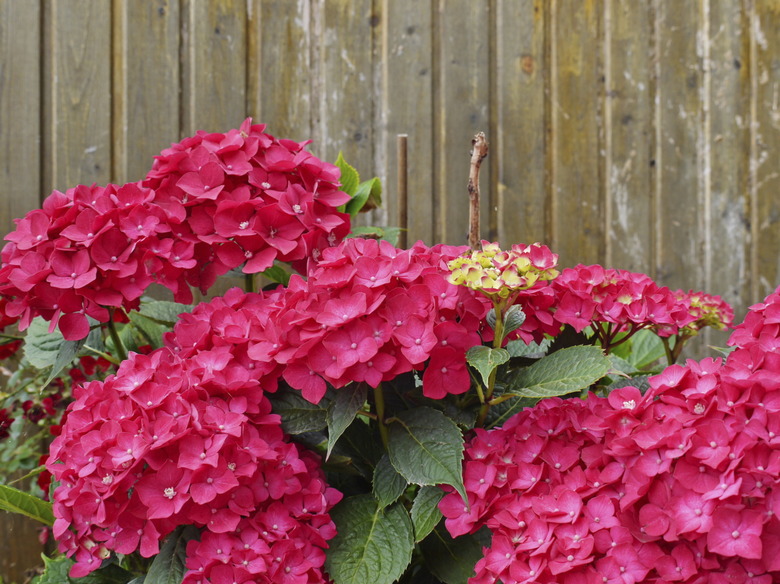How To Make My Hydrangeas Red
Red isn't the first color that comes to mind when someone mentions a bigleaf hydrangea (Hydrangea macrophylla). It's more traditional for this plant to do its color-changing trick with shades of baby blue or girly pink. But if you select the right cultivar and ramp up the alkalinity of the soil, you'll be looking at some wonderful shades of red.
Hydrangea's Bag of Tricks
Bigleaf hydrangea has everything it needs to seduce a gardener. It's an easy-care perennial shrub with big, beautiful blossoms that decorate a garden all summer long. Plants producing pompom style blossoms are called mopheads, while the more demure, disk-shaped flowers are found on lacecaps. But the hydrangea's claim to fame is its ability to change color on cue. Growing in acid soil, the plant produces blue blossoms; in alkaline soil, pink blossoms.
Ramping Up Pink
If pale red hydrangea flowers are all you're hoping for, ramp up the alkalinity of your plant's soil and see how dark the pink gets. It works like this: The acidity of soil is measured on a pH scale from zero to 14. A pH of 7 means the soil is neutral. Any soil with a pH under 7 is acidic; if it's over 7, its alkaline. The higher the number, the more alkaline the soil and the rosier your hydrangea flowers will be. Ultimately, they may verge on red.
Redder Reds
If it's redder reds you're after, purchase a red hydrangea cultivar. A good one to try is "Ami Pasquier" (Hyydrangea macrophylla "Ami Pasquier"). Like other bigleafs, "Ami Pasquier" thrives in U.S. Department of Agriculture plant hardiness zones 6 through 9. It is a rounded, compact "mophead" shrub that can grow to 4 feet tall. In acid soil, it produces blue flowers. But in alkaline soil, the round inflorescences turn a deep crimson red.
Adding Lime
If you need to nudge your soil farther along the line toward alkaline to get your hydrangeas as red as possible, add lime. Adding dolomitic lime or agricultural lime increases the soil's alkalinity. Sprinkle 1 cup of lime around the dripline of each shrub. Do this in spring and again in fall, watering it in well. Continue repeating the application until the flowers achieve your desired shade. For faster action, dissolve 1 tablespoon of hydrated lime into 1 gallon of water. Water the soil around the plant with the solution generously in March, April and May, but be sure not to drip any on the shrub's foliage.
